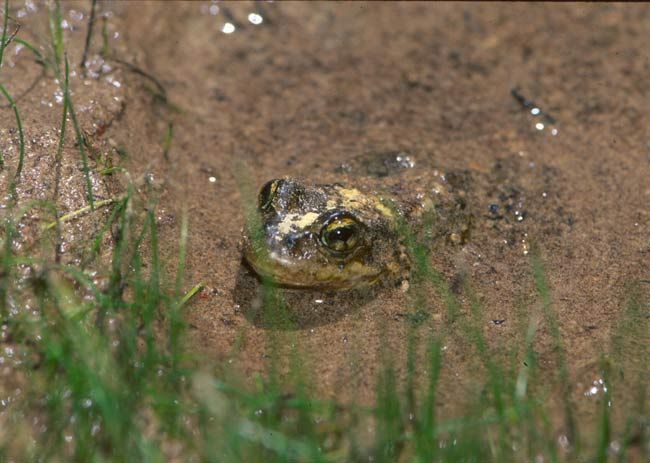More Species at Risk from Climate Change Than Thought

Climate change predictions paint a bleak picture for much of the world's flora and fauna: Species that can't keep up with a warming world will be pushed toward extinction unless conservation efforts can save them, the thinking goes. But a new study warns that many of the creatures most vulnerable to climate change are not currently considered conservation priorities.
A group of researchers with the International Union for Conservation of Nature (IUCN) assessed all of the world's birds, amphibians and warm-water reef-building corals — 16,857 species in total — and analyzed their exposure to climate change, as well as a long list of biological and ecological characteristics that would affect each species' sensitivity and adaptability to changes in their natural habitat. These wildlife groups were chosen because they are relatively well-studied and they cover terrestrial, freshwater and marine environments.
Up to 83 percent of birds, 66 percent of amphibians and 70 percent of corals that they identified as highly vulnerable to climate change are not on the IUCN Red List of Threatened Species, the study found. The Red List is the most widely recognized inventory of the planet's most endangered species. Species on the list are considered the most threatened with extinction and have generally experienced a sharp decline in population or a shrinking geographic range.
The researchers also made maps showing clusters of the most vulnerable animals that are not on the Red List. The most highly threatened but unlisted birds are concentrated in the Amazon basin and eastern South America, Europe, the Congo basin, parts of North America, northern and central Asia and Australia. The most vulnerable amphibians are bunched in the Amazon basin, Eurasia, southern North America to Mesoamerica and Madagascar, while at-risk but unlisted corals are concentrated in the Caribbean and southern Red Sea, the researchers wrote.
"The findings revealed some alarming surprises," study leader Wendy Foden, of the IUCN Global Species Programme, said in a statement. "We hadn't expected that so many species and areas that were not previously considered to be of concern would emerge as highly vulnerable to climate change. Clearly, if we simply carry on with conservation as usual, without taking climate change into account, we'll fail to help many of the species and areas that need it most."
Previous research has shown that birds, amphibians and corals are all facing existential threats due to climate change and other environmental factors. A study in the journal PLoS One last year found that bird extinctions are on the rise mainly because of habitat destruction for agriculture development. Amphibians have seen a precipitous decline in the past several decades. Their permeable skin and water-and-land life cycle make them especially vulnerable to changes in the environment, and the deadly spread of the chytrid fungus has sent frog populations plummeting worldwide. As for corals, warming oceans could mean more frequent bleaching for the reef-builders and eventually lead to mass die-offs.
The IUCN study was detailed this month in the journal PLOS One.
Sign up for the Live Science daily newsletter now
Get the world’s most fascinating discoveries delivered straight to your inbox.
Follow Megan Gannon on Twitter and Google+. Follow us @livescience, Facebook & Google+. Original article on LiveScience.com.













